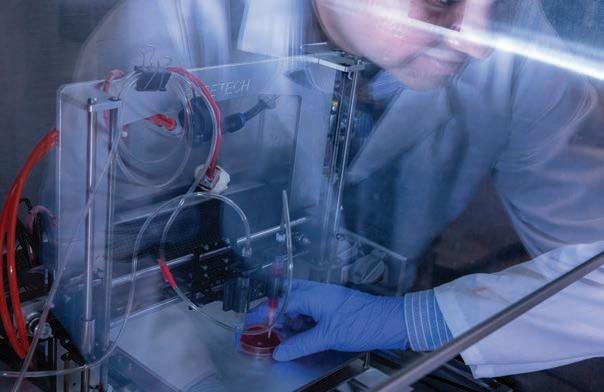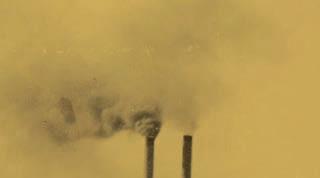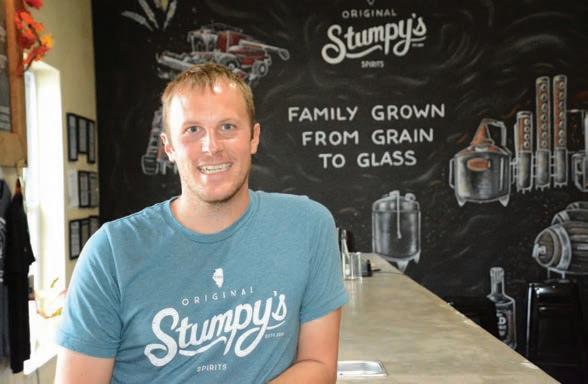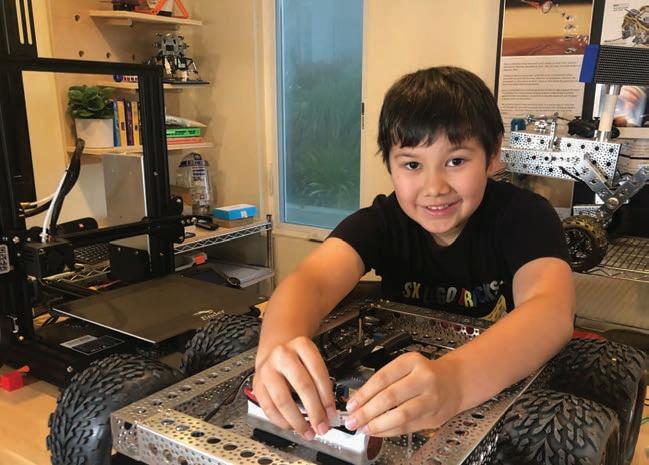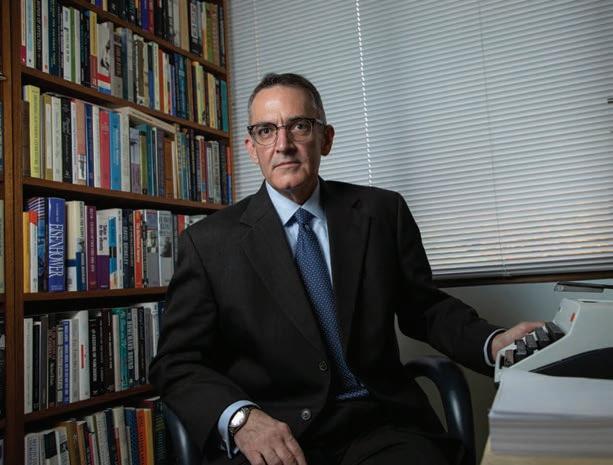
6 minute read
A crime to remember
from Missouri S&T Magazine, Summer 2020
by Missouri S&T Library and Learning Resources | Curtis Laws Wilson Library




Mississippi native Trent Brown was born in McComb, a town of 10,000 he calls “a remarkably violent place in the 1960s.” It’s also where a 12-year-old named Tina Andrews was murdered in 1969. After two extensive murder trials that ended in a mistrial in 1971 and resulted in an acquittal in 1972, her case remains unsolved today.
Brown, a professor of English at S&T, chronicles the first comprehensive examination of the case in his book Murder in McComb: e Tina Andrews Case. After three years of research and writing, his investigation sheds new light on the impact of the prejudices of whites against whites during and after the tense, uncertain civil rights era.
Brown presents documented evidence and proceedings of the case, as well as recent interviews with people involved. He says the book doesn’t try to solve a cold case, but to explain why the arrests after the murder didn’t result in a conviction.
Andrews and her friend, Billie Jo Lambert, the state’s key witness, were considered “girls of ill repute” and “trashy” children by many people in McComb.
“If they had come from so-called ‘better’ families, I can imagine a dierent outcome for the case,” he says. “With witnesses reluctant to testify, a skilled and aggressive defense attorney, and some local residents who didn’t wish to see the two arrested law enforcement ocers convicted, the story became one about social class and taking sides.
“I’ve spent a lot of time reflecting on the values of the place where I grew up,” says Brown. “With Tina Andrews’ story, I’ve tried to explore part of the Deep South’s history in the years beyond the civil rights movement, and at the same time, give her short life and the lack of justice that ensued the recognition it deserves.”
WHAT CAN THE NAKED MOLE-RAT TELL US ABOUT AGING?



According to widely accepted theories, aging results from accumulated cellular damage caused by the byproducts of oxidative metabolism — the way our bodies burn oxygen to produce energy. Once a certain threshold of oxidative damage is reached, we die. e theory doesn’t seem to apply to naked mole-rats, which can live 10 times longer with higher oxidative damage than mice of comparative weight.
“e long lifespan of the East African naked mole-rats raises one of the most serious paradoxes in the study of aging,” says Chen Hou, an associate professor of biological sciences at S&T. “And geriatric researchers are asking if the oxidative stress theory is dead.”
Hou and his team developed a data-based theoretical model that estimates oxidative damage accumulation with age. It highlights a tradeo between the metabolic energy costs of growth versus damage repair. If animals expend too much energy on growth, will less be available to repair their oxidative damage, and will it accumulate? It suggests that high metabolism leads to faster damage accumulation.
Photo by John Trainor/flickr.com
e study shows that during growth, naked mole-rats expend more energy than mice, and by the end of their growth, have accumulated greater oxidative damage. It also shows that the low metabolism of adult naked molerats significantly slows the speed of damage accumulation to less than that of mice.
Hou says this observation led to his hypothesis that mice have lower oxidative damage than naked mole-rats for a large portion of their life, but the oxidative damage of mice will reach the threshold sooner, which causes them to die sooner. He calls it “the simple answer to the paradox.”
Hou says the discovery that a large portion of lifetime oxidative damage accumulates during growth is especially important for large species, including humans, due to their long growth periods.
“If our hypothesis is proven, the model can become a theoretical framework to learn how dierences in children’s developmental traits — such as growth rate, birth-to-adult weight ratio, and the energetic cost of biosynthesis — will aect their adult health and lifespan,” says Hou. e research was published in the journal Advances in Geriatric Medicine and Research.
LIKE WATER FOR ENERGY
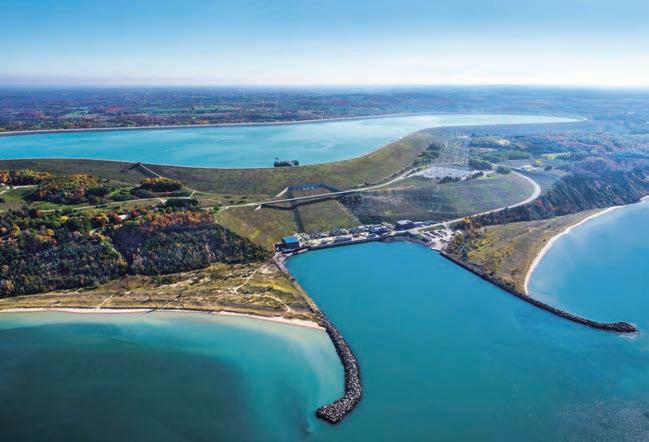



Missouri S&T’s partners include Consumers Energy and DTE Electric, which operate the Ludington Pumped Storage Facility. Photo courtesy of Consumers Energy
About 10% of electricity in the U.S. is created by moving water, or hydropower, according to the U.S. Department of Energy’s Hydropower Vision report, which also found great potential in improving hydropower systems to meet more U.S. energy needs. Now the DOE is investing about $7.5 million into research projects to improve hydropower and reduce electricity costs for consumers.
Part of that investment includes a $999,554 grant to a Missouri S&T research team to improve and evaluate better models for pumped storage hydropower (PSH) — a subset of hydropower that uses water storage in reservoirs to generate energy.
“A pumped storage hydro plant is a special plant that can both generate electricity and consume electricity,” says Rui Bo, the principal investigator on the grant and an assistant professor of electrical and computer engineering.
A PSH plant uses two water reservoirs at dierent elevations to generate power as the water descends through a turbine. To generate energy continuously, the plant pumps water from the lower reservoir to the upper reservoir and the cycle starts again. e Taum Sauk Energy Center near Lesterville, Mo., is one example of a PSH plant. It is operated by St. Louis-based Ameren, one of the industry partners on this project.
“It may sound odd to use energy to pump the water up and then you’re using the water to generate energy again,” says Bo. “But the reservoirs serve dierent purposes at dierent times.” e process works like a rechargeable battery — storing and expending power when needed, Bo says.
“You want to generate power when the system is in need of more energy and the price is higher,” Bo explains. “When you pump water, you choose the time when the energy demand or load is low and the price is low.”
Bo says when operated eciently, the cycle makes sense economically.
“Hydro plants are also very flexible,” he says. “ey can adjust the amount of electricity they generate really quickly. In contrast, a coal-fired power plant involves a complex thermal process that is not as fast.”
Other renewable energies, such as wind and solar, are intermittent resources that depend on the weather to generate energy. e result is that other conventional electricity generation must adjust up and down accordingly to compensate.
PSH plants can help the system deal with this issue to integrate renewables.
“e PSH plants don’t emit air pollutants when generating power, and they can enable the use of more renewable energy. at makes it possible to reduce emissions. It can also defer investment in generation and transmission,” says Bo. “If we don’t operate PSH plants eciently, we would need other generators to compensate for that.”
Missouri S&T is joining with system operators, research institutions and industry leaders to test new PSH models in real-world conditions.
“We will use real data to generate real benefits to consumers. If this project is successful, it has the potential to be applied in energy markets across the U.S.,” says Bo.

